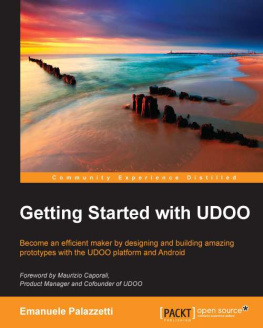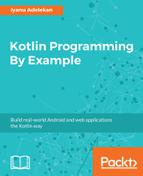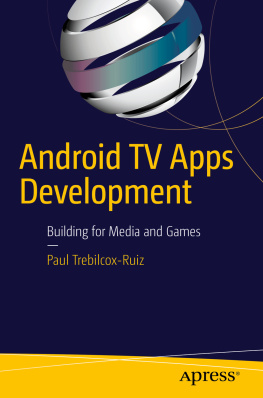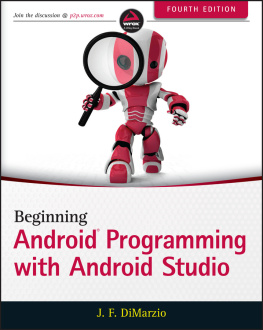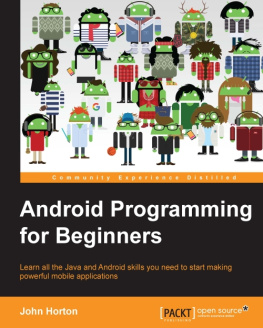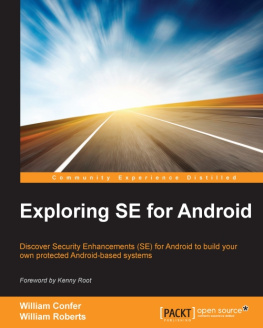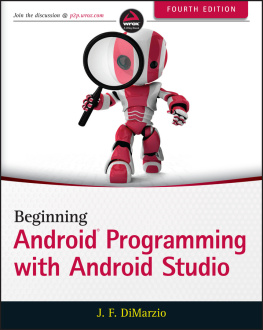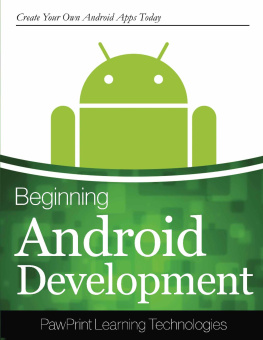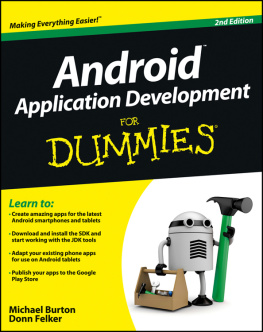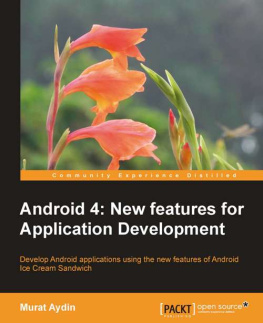Emanuele Palazzetti - Getting Started with UDOO
Here you can read online Emanuele Palazzetti - Getting Started with UDOO full text of the book (entire story) in english for free. Download pdf and epub, get meaning, cover and reviews about this ebook. year: 2015, publisher: Packt Publishing, genre: Home and family. Description of the work, (preface) as well as reviews are available. Best literature library LitArk.com created for fans of good reading and offers a wide selection of genres:
Romance novel
Science fiction
Adventure
Detective
Science
History
Home and family
Prose
Art
Politics
Computer
Non-fiction
Religion
Business
Children
Humor
Choose a favorite category and find really read worthwhile books. Enjoy immersion in the world of imagination, feel the emotions of the characters or learn something new for yourself, make an fascinating discovery.
- Book:Getting Started with UDOO
- Author:
- Publisher:Packt Publishing
- Genre:
- Year:2015
- Rating:3 / 5
- Favourites:Add to favourites
- Your mark:
Getting Started with UDOO: summary, description and annotation
We offer to read an annotation, description, summary or preface (depends on what the author of the book "Getting Started with UDOO" wrote himself). If you haven't found the necessary information about the book — write in the comments, we will try to find it.
Become an efficient maker by designing and building amazing prototypes with the UDOO platform and Android
About This Book- Create real-world applications and prototypes using all the features provided by the UDOO board
- Learn how to use the on-board Android operating system to control circuits and to provide new impressive interactions
- This is a concise guide with step-by-step instructions that will help you create real-world applications using UDOO
If you are an Android developer who wants to learn how to use UDOO to build Android applications that are capable of interacting with their surrounding environment, then this book is ideal for you. Learning UDOO is the next great step to start building your first real-world prototypes powered by the Android operating system.
What You Will Learn- Build working prototype circuits using breadboards
- Create real-world applications and prototypes using all the features provided by the UDOO board
- Control external circuits from Android applications with the Accessory Development Kit
- Listen to the environment and change the application behavior using external sensors
- Enhance user interaction with native Android APIs for voice recognition and synthesis
- Use the Android networking API to provide Internet data to UDOO-connected circuits
- Collect and publish sensor data from Android applications using MQTT libraries
UDOO is a new development platform that acts as a single board computer capable of running both Linux and Android operating systems. With the compatibility of Arduino devices together with the Android operating system, this board favors the rapid development of physical applications with a solid user interface, which contributes significantly to the success of your projects.
This book is a great tutorial if you are planning to integrate all the amazing capabilities offered by Android into your small or big prototypes and be productive as soon as possible.
This is a step-by-step tutorial that will help you to create amazing real-world applications using UDOO. In each chapter, a new capability provided by the UDOO board is explained and then used in a real-world context to create a new physical application.
Emanuele Palazzetti: author's other books
Who wrote Getting Started with UDOO? Find out the surname, the name of the author of the book and a list of all author's works by series.

